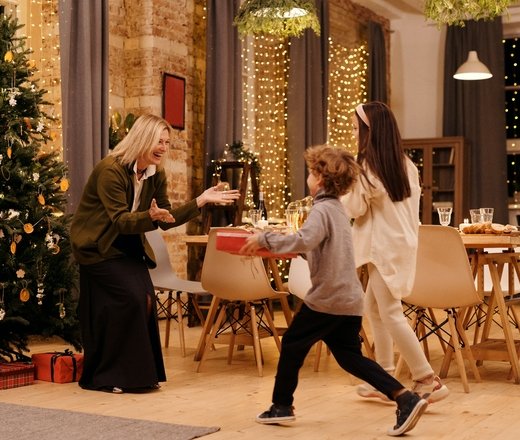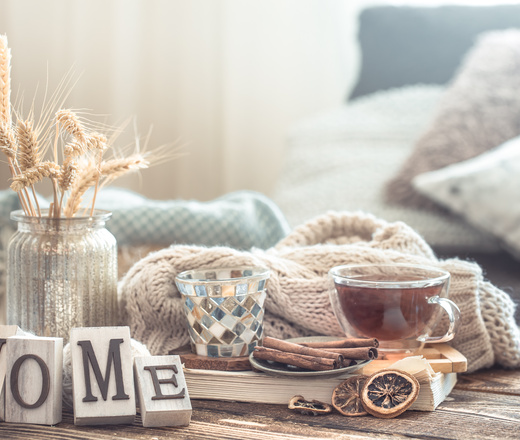September marks World Alzheimer's Month and as a condition that is sadly close to many of the Maddisons Team, we thought it was a good opportunity to raise awareness and highlight ways you can make your home more dementia friendly.
The way your home is designed and laid out can have a big impact on someone with dementia. Although a progressive condition, with the right support a person living with dementia can often continue to live safely at home for many years. One of the best ways to make this possible is to make small adaptations to your home, so that it is easier for yourself or a loved one to navigate around the home and continue carrying out their daily tasks. Below we share how you can do this.
-
Install good lighting levels around the home
Most people with dementia can benefit from better lighting in their home – it can help to avoid confusion and reduce the risk of falls when they can see furniture and stairs better. Lighting should be bright, even and as natural as possible. You can increase natural light during the day by making sure all curtains are open, nothing is blocking the windows and hedges/ trees are cut back if they block out sunlight.
Lighting is particularly important on the stairs, kitchen and in the w.c. and bathroom, so make sure light switches are easy to reach and use. Automatic light sensors can be a good addition.
-
Use contrasting colours with minimal patterns to flooring and furnishings
Dementia can affect your ability to tell the difference between colours, so it is important to make it as easy as possible to identify walls, floors, furniture and other things around the house. Choose furniture and furnishings such as tables, chairs and beds with bright, bold colours.
Make use of contrasting colours to help you find things more easily for example, having a toilet seat that is a different colour to the rest of the bathroom is a good idea. In the kitchen using contrasting crockery can aid identifying different sizes. Avoid patterns like stripes as they can be confusing or cause disorientation – as patterns can ‘move’.
-
Safer flooring
Try to avoid rugs or mats on the floor, as some people may become confused and think the rug or mat is an object that they need to step over, which could lead to trips or falls. Also, refrain from using shiny or reflective flooring, as this may be perceived as being wet, and the person with dementia may struggle to walk over it.
The best flooring to choose is matt and in a colour that contrasts with the walls. Use colours that can’t be mistaken for real things, such as green (grass) or blue (water) as the condition sadly can muddle the mind.
-
Use signs, lists and labels as prompts and reminders
As dementia progresses, the ability to remember where things are or things that should be done may decline. Labels and signs around the house can help those with the condition to find things more easily in the kitchen drawers and cupboards, as well as helping to organise daily routines. Signs should ideally have a picture along with clear wording to make them easy to understand.
Consider putting a calendar up to remember important dates and times, such as when to take medication or any plans you have that week. A clock that is large and shows the day of the week, month and year can be helpful.
-
Keep things simple in the bathroom
Put a picture and sign on the door labelling the w.c. or bathroom and consider removing the w.c. lid if it makes the w.c. easier to identify. Ensure you have towels and toilet rolls with colours that contrast with the walls.
Clearly labelling the taps with hot and cold is also helpful and a flood prevention plug in the bathtub can save you from water flowing over the edges. If you have a boiler where you can set the hot water temperature, then consider reducing this to a level such as 42 degrees to avoids scolds.
-
Make frequently used things in the kitchen visible
The kitchen can be a confusing place for a person living with dementia, particularly as most utensils are stored away and hidden from plain sight. Store away potentially harmful substances like cleaning products and keep pet food separate. It’s a good idea to use plain coloured plates to make food stand out and use clear containers when storing meals for later.
Bear in mind that dementia can affect your ability to grip and use items such as forks and knives. If the individual struggles with this, it may be a good idea to get adaptive utensils.
-
Reduce reflections in mirrors and glass
Mirrors and reflections can cause distress as people with dementia may not recognise themselves. This can be because they have reverted to a certain point in their life and believe they are younger or they may see themselves as a stranger, both of which can be a frightening experience. Wherever possible, either cover or remove mirrors and close the curtains in the evening to avoid reflections in windows.
-
Secure gardens and create user friendly outside spaces
Like everyone, people with dementia will benefit from going outside to get some fresh air and exercise. Make sure that walking surfaces are flat to prevent trips or falls and outdoor space is secure to prevent the risk of leaving the safety of the garden.
Ensure flower beds are raised to help people with restricted mobility look after their garden and every entrance to the garden should be easy to see and use. Bird feeders and bug boxes will attract wildlife into the garden which can help generate interest and keep engagement so the garden can be enjoyed all year round.
If you have dementia and are able to live at home making adjustments to your home can help you stay safe and allow you to continue to enjoy your own home for as long as possible. If you would like to find out more about dementia head to Alzheimer’s Society website.
Market your property with Maddisons Residential
For many, the first point in their house moving journey, is to understand the value of their current home. Whether you want a quick, instant, online indication, or a more robust property specific and individual valuation, we would be delighted to help.





